Getting the Most from Your 401(k) After Retirement
A 401(k) represents a large chunk of life savings for many people. As you get older and eventually stop working, it’s important to manage this money wisely in order to protect your finances and lifestyle.
There are a few general ways to address a 401(k) at retirement, with various pros and cons attached to each strategy. This article covers these options so you can make the best choice for you and your family and enter this exciting chapter of life with clarity and confidence.
How does a 401(k) work when you retire?
Before we discuss your options in this respect, know that three types of 401(k) accounts exist: traditional, Roth, and after-tax 401(k) contributions.
With a traditional 401(k) account, you make contributions pre-tax, enjoy tax-deferred growth, and pay tax on distributions (withdrawals) after retirement.
With a Roth account, meanwhile, you make after-tax contributions and enjoy tax-free growth and withdrawals upon retirement.
Finally, an after-tax 401(k) contribution account is a hybrid of a Roth and traditional 401(k). These accounts feature after-tax contributions, but growth is tax-deferred: meaning you'll only pay taxes on the amount you've earned whenever you withdraw funds. Since after-tax 401(k) contribution accounts are less common overall, this post doesn’t touch on these specifically.
Despite their differences, all 401(k) account types share a common goal: to provide financial support during retirement.
Understanding 401(k) options at retirement
If you're pondering what to do with your 401(k) when you retire, know you have a few popular options at your disposal.
Keep your existing 401(k) plan with your employer
You may in fact not need to move your 401(k) account from your previous employer. While company policies vary, this option is typically available for accounts with balances over $5,000. Just know that while your company’s administrator will safeguard your 401(k), they won’t allow additional contributions.
It's also important to understand that if you have multiple 401(k) accounts with various employers, managing each of your accounts requires a bit of juggling. For example, you'll need to log into multiple platforms to view account balances and withdraw funds—often a hassle—and those with multiple 401(k)s from prior jobs must take a required minimum distribution (RMD) from each account, which (depending on how many accounts you have) can become an administrative burden. We’ll discuss RMDs shortly.
Roll over your 401(k) into an individual retirement account (IRA)
If you want to split completely from your previous employer, you can roll over your 401(k) into an IRA. Your financial advisor or financial institutions such as banks, credit unions, and brokerage firms can perform IRA rollovers.
Many investors opt for this option because IRAs offer nearly unlimited investment choices compared to employer-sponsored 401(k) plans, which are often more limited. Plus, an IRA can serve as a single destination for older retirement savings plans.
Should you choose to roll over your 401(k) to an IRA, you’ll need to adhere to strict rules regarding the transfer process.
A direct rollover is the simplest and oft-recommended way to move retirement money. With this option, your 401(k)-plan administrator sends funds directly to your new IRA account with no need for you to touch the money.
With an indirect rollover—also known as a “60-day rollover”—you take actual custody of the funds as a check is provided for you.
If you roll over a traditional 401(k) to an IRA using an indirect rollover, your employer will generally withhold 20% of your transfer amount and send it to the IRS on your behalf as advance payment towards your tax liability.
After receiving the net funds, you can use these for any purpose but will need to redeposit the total amount (including, if applicable, the amount withheld for taxes) into a new IRA by the end of 60 days to avoid paying penalties and taxes.
This is precisely why indirect rollovers are usually only recommended if you urgently need the money and can execute this transaction within the 60-day window without any risk.
Initiate a Roth IRA conversion
A Roth IRA conversion is the process of rolling over all (or a portion) of your balances from your pre-tax account—in this case your 401(k)—into a Roth IRA.
Strategically transferring money via a series of Roth IRA conversions when your income is lower can potentially save you a lot of money in taxes. However, there are tax implications to consider with Roth IRA conversions as you’ll need to pay taxes on the amount you convert; we therefore recommend you consult with a financial advisor to help determine if Roth IRA conversions are right for you.
Transfer your 401(k) funds to an annuity
An annuity—a type of insurance product that provides investors with a guaranteed stream of income—dictates you pay money up front (via a lump sum or series of payments) that is then invested and later paid out per an agreed-upon time, amount, and timeframe.
If your 401(k) plan allows you to transfer funds into an annuity, you can enjoy guaranteed income for the rest of your life—giving you added peace of mind that you won’t run out of money in retirement. However, annuities aren’t for everyone as they’re often complex and involve many fees. As with your other options, team up with a financial advisor to help evaluate whether or not an annuity makes sense for you.
How to use your 401(k) after retirement
Assuming you decide to keep your money in your 401(k), be sure to familiarize yourself with some age-related considerations for making 401(k) withdrawals…
For a 401(k) account, "early" is defined as anything prior to age 59½ unless you qualify for the rule of 55 provision; those who fall below the age threshold and withdraw funds from a 401(k) will typically incur a 10% early withdrawal penalty, paying income taxes on the amount withdrawn.
An early withdrawal fee also applies to Roth 401(k)s, but unlike with a traditional 401(k), only earnings made on contributions (rather than the total amount withdrawn) is taxed.
If you're between age 59½ and 73, you can withdraw 401(k) funds without penalty but must still pay income tax on traditional 401(k) withdrawals.
Keep in mind the "five-year" rule for Roth 401(k)s, which states you could be subject to tax on the earnings portion of your account if you’ve owned it for less than 5 years.
Starting at age 73 (age 75, as of 2033), those with traditional 401(k)s must make required minimum distributions (RMDs): the minimum amount you must withdraw from some tax-deferred retirement accounts such as a 401(k) or traditional IRA. Failing to meet RMD requirements can trigger a substantial penalty and a 25% tax on the amount not withdrawn.
Roth 401(k) plans no longer have RMD requirements thanks to changes associated with the SECURE Act 2.0.
Should you choose to roll over your 401(k) into an annuity, know you must also take RMDs at age 73 (age 75, as of 2033).
Professional retirement strategies
You can adopt a number of professional investment strategies within the aforementioned frameworks. Whether you choose to leave money in your 401(k), transfer it to an IRA, or make a bulk withdrawal, there are lots of ways to make your money go further—with many of these techniques based on tax minimization, wealth conservation, diversification, or legacy planning.
Making strategic withdrawals
How you take money out of your retirement accounts can have a big impact on the taxes you owe. By choosing the best withdrawal strategy, you can maximize your income while minimizing taxes. Keep in mind there's no one-size-fits-all approach in this respect, and the right choice for you will depend on various factors and perhaps multiple strategies.
For example, one common tactic is a proportional withdrawal that involves taking withdrawals from different types of accounts each year in proportion to their balances. For example, if you withdraw 60% from tax-deferred accounts, 30% from taxable accounts, and 10% from Roth accounts, you can manage your tax bracket more effectively: spreading out the taxable income so you benefit from lower tax rates on long-term capital gains in taxable accounts while also taking advantage of tax-free Roth withdrawals.
Ensure you’re not taking unnecessary risks
For most people, retirement is not the time to be risky; investing a larger percentage of your income into higher-risk assets (e.g., stocks) should occur at a younger age, with safe havens for your money otherwise allowing you to lock in gains without risking your future as you get older. Per recognized stock allocation rules, the percentage of funds invested in stocks and other risky investments should equal 100 minus your age—meaning a 70 year olds, for example, should implement low-risk strategies for at least 50% of their 401(k), IRA, or other retirement funds.
Diversifying your investments
Diversifying your investments is one of the best ways to protect your retirement. Whether you have money in a 401(k), IRA, or business, it's important to spread your wealth around. Diversification ultimately helps capture a variety of returns while protecting your balance against the downfall of a single asset class.
Supporting your beneficiaries
Did you know that if you pass away with an existing 401(k), any money left in the account will go to your beneficiaries listed on the same (regardless of what your will says)? The same holds true for all other retirement and insurance policies.
It's crucial to understand the potential financial implications for your beneficiaries, which is precisely why working with a financial advisor is so important in this respect. He or she can help you with your estate-planning needs, ensuring you maximize the value of your assets and facilitate a smooth transfer to your heirs.
Final thoughts on getting the most from your 401(k) after retirement
Retirement certainly is an exciting life chapter. After dedicating years and years to hard work, it's finally time to enjoy the fruits of your labor and spend more time with the people you love. With so many options available to support you financially during retirement—from existing 401(k) plans to IRAs and other investments—it's important to speak with a professional financial advisor so you can make the right choice for yourself and your family.
To learn more about your 401(k) options at retirement, feel free to schedule a FREE discovery call with one of our CFP® professionals.
———
Vision Retirement is an independent registered advisor (RIA) firm headquartered in Ridgewood, New Jersey. Launched in 2006 to better help people prepare for retirement and feel more confident in their decision-making, our firm’s mission is to provide clients with clarity and guidance so they can enjoy a comfortable and stress-free retirement. To schedule a no-obligation consultation with one of our financial advisors, please click here.
Disclosures:
This document is a summary only and is not intended to provide specific advice or recommendations for any individual or business.
There is no guarantee that a diversified portfolio will enhance overall returns or outperform a non-diversified portfolio. Diversification does not protect against market risk.
Fixed and variable annuities are suitable for long-term investing, such as retirement investing. Gains from tax-deferred investments are taxable as ordinary income upon withdrawal. Withdrawals made prior to age 59½ are subject to a 10% IRS penalty tax, and surrender charges may apply. Variable annuities are subject to market risk and may lose value. Riders are additional guarantee options that are available to an annuity or life insurance contract holder. While some riders are part of an existing contract, many others may carry additional fees, charges and restrictions, and the policy holder should review his/her contract carefully before purchasing. All guarantees are based on the claims-paying ability of the issuing insurance company.





